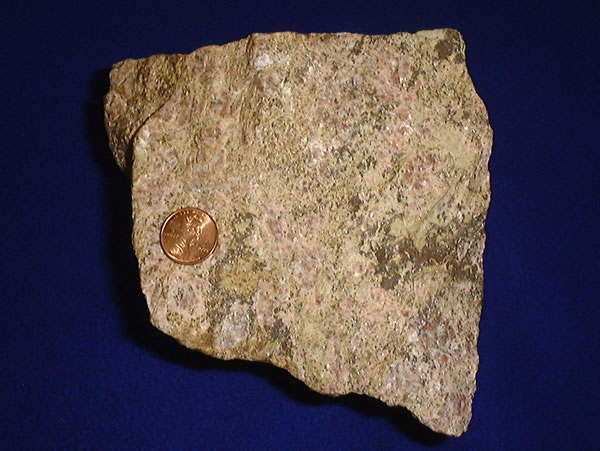- Science
- 19 de September de 2025
- No Comment
- 9 minutes read
Rare Earths in Power

Rare Earths in Power
Spain does possess certain deposits, but they are marginal, scattered, and face strong environmental opposition

Wars are neither accidental nor gratuitous. The trio of Trump, Putin, and Zelensky in the Ukrainian conflict is not a love triangle but one of interests. One of its underlying causes is the struggle for rare earth mining. For several decades now, rare earth elements have become of considerable geopolitical and economic importance. Their story begins with Johan Gadolin, who in 1794 chemically analysed a mineral from Ytterby and discovered within it an unknown “earth”. Although Gadolin did not isolate the pure element, his work paved the way. Later, in 1880, the Swiss chemist Jean Charles Galissard de Marignac identified new spectral lines, detailing them as a rare earth element: gadolinium. Yet it was not until the end of the Second World War that the necessary technologies for refining rare earths were developed. The so-called Manhattan Project produced crucial advances in the refinement and separation of uranium for the atomic bomb, a process that also encompassed rare earths. The chemist Frank Spedding developed ion-exchange methods using resins to separate and purify them. But what exactly are rare earths? And why do they carry such geostrategic weight?
The term “rare earths” refers to a group of 17 very heavy chemical elements, most of them situated at the end of the periodic table: principally the lanthanides, together with scandium and yttrium. They are classified into two groups: light rare earth elements (LREE) and heavy rare earth elements (HREE). The light ones, such as lanthanum, praseodymium, or neodymium, are more abundant and relatively easier to extract. The heavy ones—dysprosium, terbium, lutetium—are scarcer, more costly, and more critical. Terbium and dysprosium, for instance, command the highest prices due to their scarcity and demand. On average, rare earths are valued between 60 and 750 US dollars per kilogram. Dense rare earths are the hardest and most expensive to extract, not least because their mining involves highly toxic and polluting processes, requiring acids and even radioactive elements in their refinement. Meanwhile, international demand continues to rise, pushing prices upward. Their importance lies in the fact that they are essential to nearly all modern technologies.
Light rare earths are vital for the manufacture of electric vehicles, wind turbines, touchscreens, low-energy lighting, electric batteries, and other devices. Heavy rare earths are indispensable for thermal and magnetic performance under extreme conditions—that is, in chips, hard drives, drones, and even military missiles. In short, without rare earths one can forget the much-vaunted green transition, environmentalism, and cutting-edge technology that seeks to reduce hydrocarbons in favour of supposedly “cleaner” energies, replacing hydrocarbon-based combustion engines with electric ones that emit far less CO₂. Rare earths are thus essential for batteries, wind and solar power, and other alternatives to oil, gas, and nuclear energy.
China, however, holds the monopoly. Less than two decades ago, it was the first to grasp the global importance of rare earths, positioning itself far ahead of the West in terms of control, extraction, and refining. Today, China holds a monopoly over these resources and over their geostrategic position. Belatedly, this has pushed the United States, Europe, Australia, and India to diversify and develop their own capacities for the extraction and refinement of rare earths. Nevertheless, China remains the world leader in rare earth mining and production. The country exercises overwhelming control over the global market for these minerals. In 2023, it accounted for more than 69% of global rare earth oxide production and nearly 90% of refining. More recent estimates suggest that it processes between 90–95% of the total. This dominance rests on low labour costs, massive state investment, and lax environmental regulations, allowing China to sell at highly competitive prices and push out Western rivals. To deflect political and ecological criticism, it also exploits resources in neighbouring Myanmar.
And what does the Trump–Putin–Zelensky triangle have to do with this? Quite simply, rare earths are at stake. The war between Russia and Ukraine can be partly understood in light of the deposits of rare earths and lithium located in Russian-occupied territories—albeit with outdated geological data, insufficient infrastructure, and high exploitation costs. Trump, for his part, has sought agreements with Ukraine for the exploitation of its rare earths. Aware of China’s dominance, the United States is pursuing deposits in Alaska, Ukraine, Greenland, Antarctica, and the Arctic—territories viewed as secure long-term investments. Trump’s desire to annex Greenland becomes more intelligible in this light.
As for Spain, it is worth tempering the optimism of those who claim that large reserves have been identified. Spaniards should not rest on their laurels: while some deposits do exist, they are scarce, scattered, and far from exceptional. They are found in Campo de Montiel (Castilla-La Mancha, Matamulas), in the Sierra de Galiñeiro (Galicia), in Almería, and in Fuerteventura. The latter offers promising signs but faces strong environmental opposition and minimal active exploitation. In short, mining here is limited and technically demanding. It is true that the European Union promotes the exploitation of strategic elements such as tungsten, tin, and tantalum, but these are critical minerals, not rare earths. Notably, rare earth deposits exist in the Arctic, Greenland, Norway, and Sweden, associated with alkaline sediments. Yet none of these can compete with the Chinese monopoly, which makes Japan’s ambitions more understandable. In the context of this global geopolitical struggle over rare earths, it is unsurprising that Japan is planning an extraordinarily costly project to extract them from more than 2,000 metres beneath the sea. Japanese estimates suggest reserves sufficient for 500 years of global demand. And no—this is not science fiction, but scientific fiction.
The Japanese are pursuing an ambitious and costly deep-sea mining project near Minamitorishima, where they have discovered vast quantities of rare earth-rich mud. Each tonne of mud is estimated to contain up to 0.66% rare earth oxides, with potential reserves of 16 million tonnes. Yet the initiative already faces strong environmental opposition due to the potential damage to marine ecosystems—this at a time when international demand for rare earths is soaring. From 2015 to 2023 demand doubled, and it is expected to double again between 2023 and 2050. All this despite forecasts that global reserves will dwindle by the end of the 21st century and that recycling from landfills will be insufficient.
Consider this: if the entire British car fleet—around 31 million vehicles—were to be converted to electric, it would require some 7,200 tonnes of neodymium, equivalent to an entire year’s global production of the element. On a global scale, if all 1.4 billion vehicles were to become electric, the required quantity of rare earths would be utterly unattainable from the Earth’s crust. Some argue that recycling our technological waste could fill the gap, but this is an illusion. On average, landfill recovery yields 6.7 grams of rare earths per kilogram of e-waste, whereas a Chinese mine produces 60 grams per kilogram of rock—ten times more. In Spain, for instance, we currently have around 300,000 electric vehicles; projections for 2050 estimate 5 million. Even if it were possible to recycle every single one of the 300,000 vehicles now in use—a logistical impossibility—the result would still fall far short of the resources required to build 5 million new ones.
In light of this, we may conclude that the control of rare earths has become a central axis of global conflict. China maintains its overwhelming lead in production and refining, prompting international efforts to reduce dependence on it in clean technologies, defence, and electronics. Spain’s reserves are marginal, scattered, and face environmental opposition. On the global stage, geopolitical rivalry over these elements will only intensify. Meanwhile, some argue that we should travel more to China, forgetting its dictatorship, and—so long as we do not offend its rulers—enjoy its “soft dictatorship”. For its rare earths, whether we like it or not, are entangled in all our interests.
Source: educational EVIDENCE
Rights: Creative Commons


